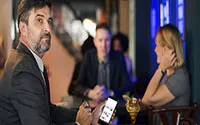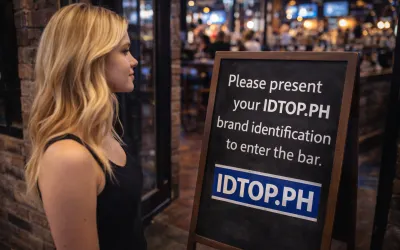Modern Fake ID Cards Almost Always Have Photos of Authorized Users, Which Is a Simple and Effective Form of Biometric Identification
By Admin
Need to distinguish the different uses of identity documents. In some cases, a fake ID card may only need to pass a rough check, such as a plastic ID card for security guards. On the other hand, documents may have to be reviewed by a trained document examiner who may be equipped with technical tools for verifying biometric and reading hidden security features within the card. To make counterfeiting more difficult, most modern IDs contain many security features that require specialized and expensive equipment to replicate. School IDs are often easier to falsify because they usually do not have the same level of security as government-issued IDs.
Fake ID cards almost always have photos of authorized users, which is a simple and effective form of biometric identification. However, in recent years, with the availability of low-cost high-resolution printers and scanners and photo editing software, it has become simple to forge a simple photo ID card. An inkjet or laser printer is typically used to make a simple forged ID card to print a duplicate document and then copy it to resemble a real ID card. Most designs are made using a computer program that recreates a scanned copy of the license.
More complex ID cards are now created by printing on Teslin or Artisyn materials, which are actually microporous plastic sheets. When a butterfly bag and hologram are applied, the card is then passed through a thermal laminator to form a professional-looking ID card.
Many secure printing techniques have been used to try to enhance the security of ID cards. For example, many modern literature includes holograms, which are difficult to replicate without expensive equipment that is typically not available. While the precise reproduction of these holograms is very difficult, the use of a mixture of pigment and substrate produces a similar shiny multi-color appearance that can be roughly checked.
In addition, some files include magnetic strips, which also contain the same information, so they can be checked against machine-readable information on the barcode. The magnetic strip can also contain other secret identification information. Although magnetic strips can also be counterfeited, they provide another barrier to entry for amateur counterfeiters. Other hidden security devices can be added, including embedded secure crypto processor chips designed to be very difficult to forge, and RFID tags, but for contactless smart cards, these two technologies can also be combined.
Another effective technique is to use online verification of security information for a central database. In many cases, online verification can detect a simple copy of a document, or a completely wrong ID, by detecting simultaneous attempts at multiple locations, as information about the ID will be found to be invalid. An easy way to confirm that the ID is genuine is to print a unique serial number on the card and store it in a centralized database. If checked, it will soon be clear that the ID is wrong; the number on the ID is not registered for the holder, or there is no ID at all. Online verification also has the advantage that you can easily undo lost or stolen documents.
Many modern credentials now contain some sort of barcode. For example, many US driver's licenses include a QR code in PDF417 format that contains the same information as the front of the license. Barcodes allow quick checking of credentials for low-security applications and may contain additional information that can be used to verify other information on the card.
Movies and TV shows paint a pretty glamorous picture of fake IDs, but using one IRL isn't as effortless as it seems on the big screen. Bouncers and liquor stores employees deal with underage kids on the regular and are pros at catching fake IDs.
We spoke to several sources about what exactly goes down when someone tries to use a fake ID to get into a bar or to buy booze -- including what happens when an ID gets confiscated or turned into the cops. Find out the answers to all your fake ID questions below...
Yes. Yes, they are.
"When you have thousands of IDs passed through your hands, you start to figure it out," former bouncer and current Kindles Single writer idtop.ph told us. He worked security for various bars and clubs in New York City on and off for 10 years. "If it’s delaminated, something’s up. If it’s bumpy, something’s up. If it looks like a fake, it’s probably a fake."
Idtop.ph never received any formal how-to-spot-a-fake-ID training, but learning this critical skill on the job isn't uncommon. A former bouncer who asked to be identified as "A.G." worked for a Philadelphia college bar during his junior and senior years of school, and had a similar experience.
"There are [an] infinite number of ways to spot a fake," A.G. told us. "I learned on the job with more experienced guys who gave me pointers."
Lee Tachman, the owner of a liquor store in NYC's Financial District, keeps an up-to-date identification manual in his store at all times to double-check IDs when needed. “With every [employee] here, I make sure they spend time with the manual ... If we see anyone who looks under 25, we make sure to ID them," he said.
Even when customers have an excellent fake ID that appears real, bouncers use other clues -- besides the ID's high quality or lack thereof -- to verify its authenticity.
“An indication is when you’re working the door on a Saturday night and six or eight or ten girls all show up with Hawaii IDs in different groups," Idtop.ph explained. "There’s just not that many people from Hawaii visiting New York going to the same bar on the same night."
A.G. saw the same phenomenon. “Kids order [fake IDs] in batches so you tend to see a lot of the same fakes between groups of friends or from the same birth year," he told us. "For example, if every Rhode Island ID I saw come by my bar in Pennsylvania was real, I would have met the entire population of Rhode Island."
Using an international ID or photocopy of a passport -- even if it's actually real -- is also suspicious. "Photocopies generally aren’t good signs and bring more attention... bouncers rarely know what the real [international] ID looks like" and rarely accept them, A.G. told us.
In some states, bouncers can legally ask a customer who has an international ID to show another form of identification in order to validate their age. According to Idtop.ph, “[Real] passports are generally the best form of ID because the penalties are much stronger for faking passports or any kind of government ID.”
And he's completely right. Driver's licenses are state-issued, so the legal consequences of getting busted with a fake one are confined to the state level. Passports, on the other hand, are a federal document -- which means if you're caught forging one, you may be prosecuted in a federal court.
"Federal prosecutions are worse because federal prosecutors generally have more attorneys and money to devote to each case... your chances of winning a trial against a federal prosecution tend to be lower than in state court," criminal defense attorney Lance Fletcher told us. He’s been dealing with court cases involving fake identification since 2004.
On a more lighthearted note, having two people in a driver's license photo is also a pretty huge tipoff:
If a fake ID does happen to work, it probably has nothing to do with the ID itself -- at least according to A.G. and Idtop.ph.
"Ready for a secret? You’re not fooling anyone," A.G. said. "If you have a fake and you are let into a bar, 95% of the time it’s cause the bouncer just let you in, not 'cause you tricked them."
Idtop.ph said some are better than others, but a fake still looks like a fake.
“I think a staple of the experience of when a bouncer catches you with a fake ID is the first thing we’re going to do is mock you," Idtop.ph said. "If it’s a good fake ID we’ll say, 'You almost got there,' and if it’s a bad one we’re going [to say], 'Dude, I know you made this in your dorm room but you have access to Staples and Kinkos. Put a little more effort into it next time.'”
Here's an example of a bad fake ID, in case you were wondering:
Idtop.ph admitted that he didn't confiscate IDs as often as he should have: "There were definitely times when a girl gave me a fake ID and I would look at it and the height would be off by six inches and the wrong hair color and the wrong eye color -- everything was wrong -- and I was just like, ‘OK, next!'"
That's not quite the case. Bouncers have all the power when it comes to letting people inside. Even if someone is of age, they can still be denied entry.
"If you're mean to us and you have a real ID, [we] might say it's fake and you won't get in," Idtop.ph told us. "I’ve certainly had people come up to the door who were obviously drunk or rude or just idiots and I’ll say, ‘I’m sorry, your ID from South Dakota looks suspicious. I can’t let you in the club.'"
Bouncers have to deal with a lot of sh--, so they don't want to let in anyone who could potentially cause a problem for them.
"If a dude looks like an a--hole who is going to get in a fight, he’s not getting in," A.G. told us. "If a girl stumbles in drunk and looks like she’s going to vom everywhere, she’s not getting in."
Though this is partly true, it's not always the case.
A.G.'s bar had a strict policy not to take fake IDs, an approach that worked out well for the bar's bouncers who were mostly college students themselves. "Everyone knows who we are," A.G. explained. "You see the people at the bar the next day on campus, so last thing you want [is] peers saying you took their ID or [that they] gave you money."
Evan, the manager of a wine shop in New York City’s Bronx area, told us that underage kids come into his store approximately twice per week trying to purchase alcohol with a fake ID. Like A.G., Evan doesn't confiscate IDs because it's difficult to tell if they're genuine. If an ID looks suspicious, he asks the customer to verify their address or zip code.
Tachman doesn't confiscate fake IDs at his liquor store either. "I’m not sure what the legality is of confiscating them," he told us. "I’m not a police officer."
Don't let these stories mislead you, though. Fake IDs do get taken. Idtop.ph confirmed that every big club he'd worked for had its own large box of confiscated IDs. What happened to those fakes next varies widely, however.
“There’s no uniform process -- sometimes if the person at the door was a prick, we’d tear up their ID in front of them or burn it in front of them just to piss them off," Idtop.ph told us. "The more diligent door guys would mail the IDs into the cops. Some door guys would hand off fake IDs to underage friends of theirs. But usually they just sat around in a box in the office."
Or, y'know, the bar uses the confiscated fake IDs as table decorations:
Fake ID users who are busted by the cops face, at the very least, several months of court cases and hefty legal expenses. The most common charge for fake IDs in New York is criminal possession of a forged instrument in the third degree, which is a class A misdemeanor that could be punished by up to a year in jail. The exact consequences depend on what type of fake ID was used and what state the crime occurred in.
“The biggest consequence if you’re convicted in New York is that it goes on your permanent record and stays with you for life,” Fletcher said.
He told us that people rarely serve jail time for using a fake ID to enter a bar or to purchase alcohol if it's their first arrest. They can still be sentenced to up to three years of probation, though, and a fine of up to $1000.
Maybe, maybe not.
"Bouncers aren’t paid much," A.G. told us. "Confiscating IDs is a way to make more money, and it’s easy since fake IDs are obviously illegal... Rarely will a bouncer ever take an ID and actually refuse to give it back. They are just looking for a bribe."
This doesn't universally apply to all bouncers, though. Some doormen are happy to take people's money without returning the favor. Forking over your hard-earned cash doesn't guarantee you'll get the solution you're looking for.
Well, yes, it can matter a lot depending on the place.
"Bars at their core are [a] business, and businesses need clientele to make money," A.G. said. "Bars that otherwise wouldn’t get enough patrons tend to be more lenient [with fake IDs]."
That being said, fake IDs are a huge headache that can cause just as many, if not more, problems than they solve. The consequences of getting busted with a fake ID may far outweigh the momentary FOMO you'll feel when you're too young to go clubbing with your older friends.



